IFRC Aerobic Faecal Waste Treatment Unit (AFWTU)
Organisation that implemented the case study
Description of the emergency context
Currently, there are 929,606 Rohingya refugees residing in 33 congested camps that have been officially designated by the Government of Bangladesh. This population surge occurred as a result of the extreme violence outbreak in Myanmar's Rakhine State on August 25, 2017, which led to an estimated 687,000 Rohingya refugees crossing the border into Cox's Bazar, Bangladesh. The Rohingya refugees have repeatedly sought refuge in Bangladesh due to ongoing persecution. Previous significant influxes occurred following acts of violence in Rakhine State in 1978, 1992, 2012, and once again in 2016. However, the largest and most rapid refugee influx from Myanmar into Bangladesh began in August 2017.
Operating within highly congested settings, such as the Rohingya camps, WASH actors face numerous challenges in implementing effective faecal sludge treatment processes that can efficiently remove pathogens. These challenges primarily stem from space limitations, which impose constraints on the inclusion of appropriate, safe, and sustainable processes for treatment.
Description of the treatment process
This system combines several treatment methods, while the “activated sludge treatment“ is the main and most important treatment step.
Coarse inlet screen : removal of large objects
Primary settler : settling and removal of heavy sludge
ABR : anaerobic digestion
Aerobic treatment : aerobic combustion
Settling tank : solid liquid separation
Parasite filter : removal of parasites
Chlorination : elimination of pathogens
Flexigester : anaerobic digestion of heavy sludge
The sludge from toilets is collected and transferred to the collection chamber where unwanted solid particles (plastic bags, female hygiene products etc.) removed by the Coarse inlet screen. In the primary settler heavy sludge settled down and liquid part goes to the ABR for anaerobic digestion (pre-treatment) and also to remove further solids from the waste stream. The liquid waste transferred to the aeration tank and the aeration of the incoming faecal sludge/wastewater in the reactor tank leads to the breeding of bacteria that metabolize the organic content (COD/TOC3) together with the oxygen, turning the organic content into a gas (carbon dioxide). The supernatant from the aeration tank is transferred to a settling tank, where the remaining solids are separated. The supernatant of the settling tank is then passed through a glass bead filter, which is regularly backwashed, for the removal of parasites and parasite eggs. Finally, the liquid is disinfected by chlorine or UV and discharged to the nearby drain or canal. Solid sludge from the primary tank, settling tank and ABR is transferred to the Flexigester for Anaerobic Digestion and to produce biogas. Alternatively, this solid sludge can be transferred to the drying bed and dried sludge can burned in the incinerator. Ash from the incinerator is then used as a soil conditioner and fertilizer.
Assessment & design (feasibility)
Treatment objective
The main treatment objective is to prevent downstream contaminations and disease outbreak, typical for large settlements with poor human waste management in emergency contexts. The secondary goal is to minimize environmental pollution. Therefore the main goals is a constant and safe COD (chemical oxygen demand) reduction by at least at least 85 – 90% as well as a reduction of pathogens and parasites by 99.99%.
Design assumptions
The assumed incoming volume of wastewater per day and person is 2,5 L which differs from the commonly used assumed volume of 500 ml per person per day. The AFWTU has a modular design concept.
From 300 people onwards up to several tens of thousands of beneficiaries can be served with the same system components, that will be assembled in different numbers and ways in order to adapt to the surrounding circumstances.
Max. number people served : 12.000
Max. inflow per day : 30.000 L
Number of filters : 3
Max. filtration capacity (total) : 9.000 L/h
Reaction time (chlorination) : 1h
Incoming wastewater :
- extremely high COD (over 10.000 ppm)
- high concentration of microorganisms
- high count of parasites
- content of large solid objects (plastic bags, female hygiene products etc.)
Discharge: Since the effluent is free from pathogens and parasites, the effluent can freely be discharged to the environment without causing harm to the downstream population or environment. However, the discharge – in order to dilute the effluent – should be carried out in the nearest river/stream.
Groundwater levels: The construction is above ground, therefore the groundwater level does not influence the operation.
Flood-prone areas: It should be avoided to locate the system in flood-prone areas unless a proper flood-proof construction/fundament can be provided.
Proximity to water sources: The normal 50-days-diffusion distance should be kept.
Construction
This construction of this plant consists of site preparation, tank platform construction, Different tanks / solar system / Felxigester / Drying bed / Solar System installation as well as necessary plumbing and fittings works. Whole construction (except Solar system) was conducted by trained community volunteers from FDMN ('Forcibly Displaced Myanmar Nationals') with close supervision of RCRC WASH Project Staffs and Remote support of Consultant.
Operation and maintenance
AFWTU system, located at Camp 19, is a multi-stage treatment process system, containing mechanical, biological, and chemical methods in order to treat the communal wastewater / human waste in the refugee camp. For a normal operation shift of the plant not more than two people are required: A shift leader (skilled) and a second person. The desludging teams are considered separate.
While the chemical and mechanical treatment steps can be process-wise easily started and controlled, the biological steps are more delicate and sensitive. This plant needs to be run 24 hours x 7 days, but power breaks up to 6 hours allowed (based on the daily intake volume). In daytime this system fully operated by solar system and generator is used at night to run the aerator and mixer which requires a small generator.
Working at a wastewater treatment plant and desludging operation are activities that contain certain dangers. Faecal sludge and wastewater is contagious and can cause significant harms to the human health and environment. The vast majority of diarrheal episodes is caused by microorganisms, transported and transmitted by human or animal feces (hand to mouth, poor water quality, vectors, poor food hygiene etc.). At all times, personal hygiene must be maintained at the highest possible level. Personal protection equipment must be used whenever contact or potential contact with human feces can occur (desludging process, transport, emptying of the barrels and storage of the empty barrels). At the beginning of shift breaks and at the end of the shift all PPE has to be cleaned and disinfected properly and stored away safely for the next day use. Handwashing, personal hygiene and disinfection of the hands is equally essential. All necessary facilities are provided in this plant.
In order to make sure that the system works correctly, once every month samples have to be taken, tested and analysed by the FSFL laboratory.
Lessons learned
- UV can be considered for pathogen elimination
- Additional treatment solutions can be considered to reduce TN
- Local power grid can be used at night instead of generator
Strengths
• Extremely low footprint
• Rapidly deployable and scalable
• Outstanding effluent values
• No chemicals needed for operation
• Short setup time
Weaknesses
• Skilled labour for operation required
• Setup to be carried out under an engineer‘s supervision
• High energy requirement (solar power possible)
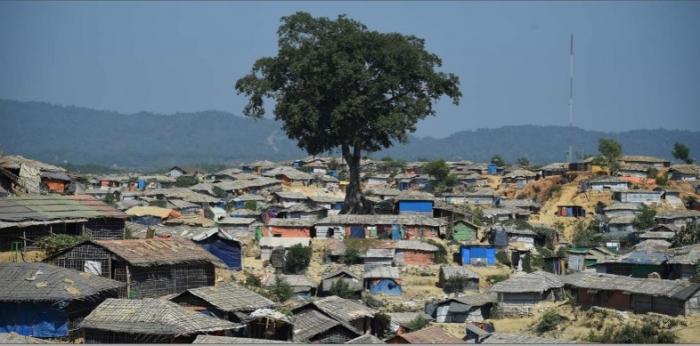
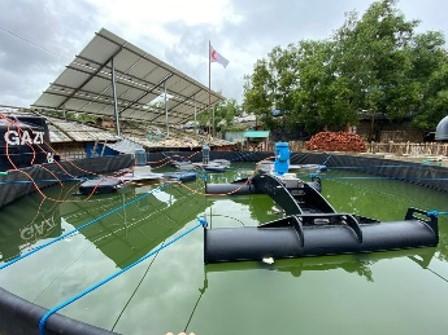
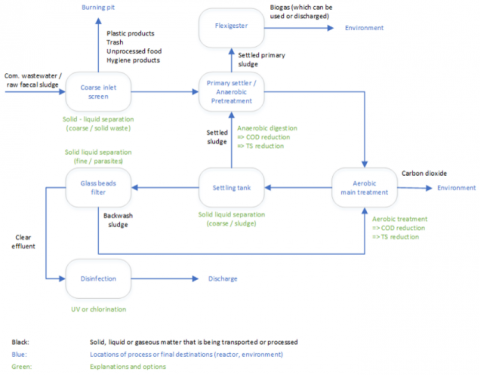

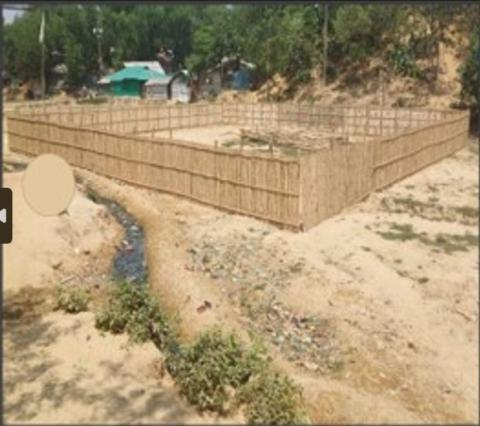
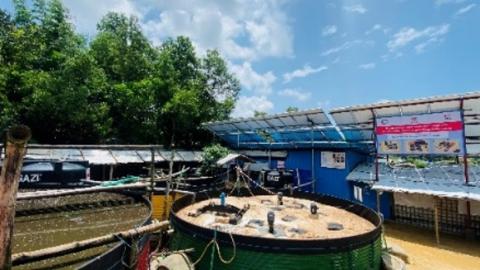
Add new comment